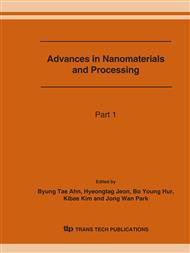p.1625
p.1629
p.1633
p.1637
p.1641
p.1645
p.1649
p.1653
p.1657
Characterization of Anisotropic and Irregularly-Shaped Materials by High-Sensitive Thermal Conductivity Measurements
Abstract:
In modern thermal analysis and design involving thermal transport in solid components it is necessary to apply different modeling of the thermal heat flow in bulk material and across solid surface interfaces either in shape of a layer or a solid-solid interface. Similar differences occur when applying different measurement techniques. Some techniques have been developed specifically for the purpose of performing measurements of bulk properties by removing the influence from thermal contact resistance between the measurement probe and the sample material. Thermal conductivity measurements on metal and ceramic objects of various geometries such as thin bars, thin sheets as well as coatings or layers are here described when using the Transient Plane Source technique. A summary overview of the recent developments of this technique, including its ability to be applied in measurement situations covering a wide range of length and time scales, is also presented. Structural changes in anisotropy can be recorded with high sensitivity by comparative measurements. The technique may be applied in situations requiring non-destructive testing, e.g. samples of particular geometry used for mechanical or tensile testing.
Info:
Periodical:
Pages:
1641-1644
Citation:
Online since:
June 2007
Authors:
Keywords:
Price:
Сopyright:
© 2007 Trans Tech Publications Ltd. All Rights Reserved
Share:
Citation:


